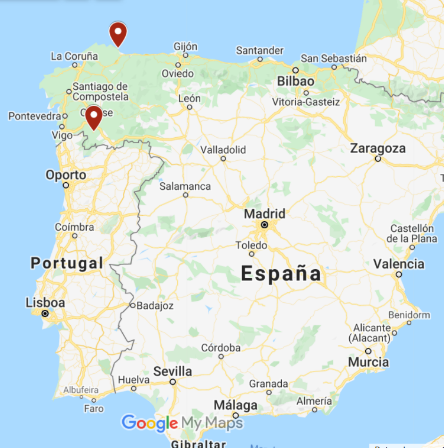Activating the migration-development link in medium and small municipalities – H2020 Joint declaration
Five ideas for getting the most out of the Italy’s National Recovery and Resilience Plan (and for a better reception of refugees)
Joint declaration of the Horizon2020 project
Welcoming Spaces and Whole-COMM
April 2022
Since 2015, there has been a redistribution of asylum seekers throughout the country, even in the most peripheral areas. Specifically, territorially and economically most disadvantaged areas of the country are often those most capable of leveraging the arrival of refugees to start rethinking the future and investing in economic, social and cultural revitalization.
Yet these promising experiences have remained substantially isolated, at best awarded formal recognition as “good practices”, in a context where the link between welcoming migrants and territorial development of marginal areas has not been placed at the centre of any real national policy.
To counter this lack of attention, the researchers involved in two ongoing projects, all funded by the European Commission’s Horizon2020 program—Welcoming Spaces and Whole-COMM—want to unite their voices to emphasise the importance of some key principles for the creation of a stable and profitable link between the integration of migrants and the development of marginal areas. To prevent territorial and social exclusion from reinforcing one other, and starting from the kind of development that also leverages cultural and environmental dimensions, we believe that the following principles should be placed at the centre of a serious program of coordinated investments and interventions, from the local level to the national and European one.
- Produce shared imaginaries of possible futures regarding migration and development of inland areas. Migration is often narrated as a problem, a crisis to be solved, while peripheral areas are often romanticised or trivialised by traditional media. Given that narratives on migration and inner areas can influence and are influenced by policies, it is necessary to co-construct a “third imaginary” to bring out the link between migration and development, with space for cultural diversity and a clearly defined added value for territories and communities. The various welcome initiatives present in some peripheral Italian areas are already working in this sense (e.g.: photographic exhibitions and public seminars, street art contests, summer schools, collaborations with local and national newspapers, blogs, theatrical performances, documentaries, etc.).
- Support development for the benefit of all. The development of inner areas should be considered in an integrated way, combining the dimension of socio-cultural well-being with the environmental, economic and political dimensions. From this perspective, it is necessary to take charge of the needs and aspirations of all the people who are part of the new intercultural communities present in the inner areas, in order to preserve their dynamism and development. It is essential to overcome the shared vulnerabilities of the residents. This means ensuring a good quality of life through the consolidation of local networks and social infrastructure and access to public services, housing and decent employment opportunities.
- Support a participatory and inclusive (whole-of-community) approach to the integration of migrants and local development. The development of inner areas and the creation of positive relationships with migrants must necessarily involve the whole community, and the multiplicity of voices and organisations that characterise it: the local administration, civil society associations, businesses, individual native citizens and migrants. It is only through mutual knowledge and dialogue that it is possible to build cohesive communities of which everyone feels a part, where hospitality and integration are not a burden but a chance to imagine and build new opportunities for economic and social development.
- Think about local development and the integration of migrants starting from the relationship between rural and urban areas. Local development and the inclusion of newcomers in peripheral areas cannot be thought of as isolated and impermeable to the dynamics of urban centres, which represent relevant poles of the labour market and services. The relationships between urban and rural areas consist of material and immaterial flows: people, economic resources, information, skills and practices are all elements that make up this relationship. An example of this is the food chain, where many migrants are employed and where the dynamics of large-scale distribution often generate negative effects on producers and workers, as well as on the environment. The joint strategic planning between rural and mountain areas of these flows is therefore indispensable to guarantee spatial and social justice and to promote sustainable development.
- Establish decision-making bodies that connect the different levels of government and also involve medium and small municipalities. The smaller municipalities are often excluded from decision-making processes which nevertheless have a decisive impact on their territories. Interventions capable of supporting local development and the integration of migrants in major urban centres may be unsuitable for rural and mountain contexts, characterised by different needs and resources. At the same time, Regional and central governments, even if they want to, do not have effective tools at their disposal to keep in touch with these areas and closely follow their transformations. It is therefore essential to develop stable institutional mechanisms that allow for continuous, and not just occasional, exchange between levels of government and facilitate the involvement of smaller municipalities.
These could become inspiring principles for an adjustment of the Italy’s National Recovery and Resilience Plan, which so far has underestimated the very real danger of ethnic and territorial disadvantages reinforcing each other. By putting these principles into practice, it may be possible to counter the risk of proposing standard solutions in the face of very heterogeneous paths of both the territories and the migrants, or the danger of draining funds through calls for projects that fails to connect individual initiatives to an organic, medium-long term strategic planning framework. With an eye to the immediate horizon, these same principles could guide us in managing the arrival of Ukrainian refugees, so that reception becomes a tool for pursuing lasting processes of economic, social and institutional innovation.








